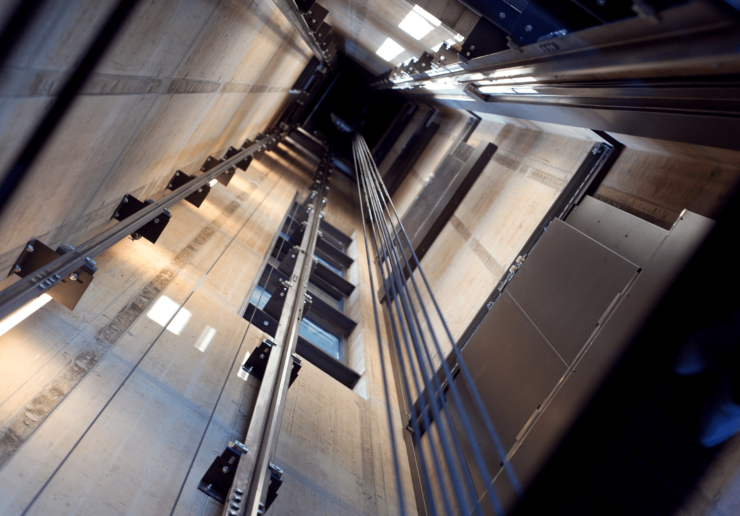33 Max is carbon plate that has up to .33 carbon and is commonly used in counterweighting and load testing.

33 Max is commercial quality, hot rolled carbon plate that is frequently used for counterweighting and load testing. It is readily formed and welded with all conventional methods, but it is not always advised because of its potentially unknown composition.
It is a carbon steel that is useful wherever projects require a good ratio of weight to size. It is not appropriate for projects requiring specific mechanical properties.
Sometimes called M33 Steel, is used in a number of industries, especially elevator manufacturing, agricultural equipment, and heavy machinery.
It is most commonly used for:
While it can be machined, we do not advise it unless the composition is known.
While it can be formed and welded, we do not advise it unless the composition is known.
It is a carbon steel that is useful wherever projects require a good ratio of weight to size. It is not appropriate for projects requiring specific mechanical properties.
Sometimes called M33 Steel, is used in a number of industries, especially elevator manufacturing, agricultural equipment, and heavy machinery.
It is most commonly used for:
While it can be machined, we do not advise it unless the composition is known.
While it can be formed and welded, we do not advise it unless the composition is known.
ANSWER:
It is not appropriate for projects requiring specific mechanical properties. It is typically used in applications requiring heavy weight at high value, where its tensile strength is irrelevant.
ANSWER:
It is commercial grade carbon steel with a maximum specification of .33 carbon. Otherwise, its chemical composition is irrelevant to its typical end use of counterweighting and load testing.
ANSWER:
It is not appropriate for projects requiring specific mechanical properties. It is typically used in applications requiring heavy weight at high value, where its tensile strength is irrelevant.
ANSWER:
It is commercial grade carbon steel with a maximum specification of .33 carbon. Otherwise, its chemical composition is irrelevant to its typical end use of counterweighting and load testing.
Steel base plates are fundamental elements employed in various manufacturing processes. These flat, rectangular...
Metal fabrication is a critical process that transforms raw metal materials into finished products....
The solar industry has undergone a significant transformation by incorporating steel products into various...
The unprecedented pace of solar growth is challenging and reforming America’s construction and engineering...
If you’ve got a roof over your head, it’s partly thanks to purlins. A...
Acquiring highly profitable company with annual sales of around USD 30 million Significant expansion...
A stainless steel depot is a specialized facility or supplier that stocks and provides...
American manufacturers use about 28.2 billion pounds of aluminum every year, 41.6% of it...
Leading steel distributor expands commitment to sustainability in the North American market. Kloeckner Metals,...
At Kloeckner, we are excited to announce that our Santa Fe Springs, CA location...

X
The Kloeckner Metals website uses modern technologies. Unfortunately, your browser doesn't support those technologies.
Download the latest version of one of these browsers to experience the site: